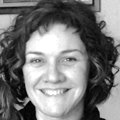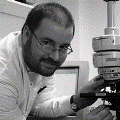| Prof. Steven Brown |
jeudi 31 janvier 2019 9:00 - 9:40 |
| |
 |
His research interests concern a wide range of problems in chemometrics, the mathematical and multivariate statistical analysis of data from chemical instrumentation, and has resulted in over 200 publications in the scientific literature. He has edited three books, including the four-volume set Comprehensive Chemometrics, published by Elsevier. A focus of his research has been on the development of new instrumental methods through use of multivariate mathematical methods for multi-component analysis, including calibration transfer, and the novel use of data fusion methods. He was winner of the first EAS Award in Chemometrics in 1996 and the Kowalski Award in 2015. His work has had applications in biomedical analysis, food science, forensic science, pharmaceutical characterization, and homeland security.
|
| Some Perspectives on the History and Sociology of the Chemometrics Revolution ! |
| A historical perspective of the development of chemometrics as a field is given. Special attention is given to early workers in the analysis and modeling of chemical data in an effort to show how the field evolved from a broad, mostly statistical discipline to a more narrowly focused field focused on multivariate predictive analysis. A discussion of the relationships of chemometrics with statistics, chemical modeling and analytical chemistry is provided to show how early conflicts have shaped and continue to shape the field. |
| |
| |
| Dr. Sébastien Gourvénec |
jeudi 31 janvier 2019 14:20 - 15:00 |
| |
 |
Following his PhD, he moved to GlaxoSmithKline (GSK) at the research center of Stevenage (UK). He worked there as a PAT (Process Analytical Technogical) chemometrician in the Chemical Development branch. He then moved to Evreux (Fr), still in GSK, where he was developing and deploying PAT technology both in R&D and manufacturing. After a few years in GSK, Sébastien became team leader on spectroscopy and modelling in Total in Gonfreville (Fr) in 2011. He was responsible for all development and support of the NIR technology for the Refining & Chemical branch. Progressively he and his team were also helping out other branches of the Total group, becoming a central technical team on NIR and Raman spectroscopy. He also developed some expertise on data science and machine learning for industrial applications. In November 2018, he will move to the R&D of the Total group, where he will be in charge of Data Science and Artificial Intelligence.
|
| From Chemometrics towards data driven approaches |
| Chemometrics has been applied over the years in different industries. More recently, the scope and the application of similar techniques has been broadened to follow the digital transformation of companies. Machine Learning, and Data Science overall, has been ramping up and is now widely used to build data-driven approaches that can be deployed industrially. They can bring many advantages and benefits and are not only covering the mathematical part of the problem. Data quality and volume, algorithms and IT infrastructures are all aspects, among others, that are extremely important for the success of deployment. The link between chemometrics, which can be seen as a particular subset of the Data Science field, and artificial intelligence is made through examples and diverse use cases, especially in the oil and gas domain. |
| |
| |
| Prof. Anna De Juan |
vendredi 1 février 2019 9:00 - 9:40 |
| |
 |
Anna de Juan is an associate professor at the Department of Analytical Chemistry at the University of Barcelona since 2003, teaching chemometrics at undergraduate and graduate levels. She holds a degree and PhD in Chemistry from the University of Barcelona (UB) and her expertise is in Multivariate Curve Resolution (MCR) methods: theoretical development and application to bioanalytical and analytical problems problems. Since 2002 she is member of the Editorial Advisory Board of Chemometrics and Intelligent Laboratory systems and since 2006 of Analytica Chimica Acta. In 2004 she received the 4th Chemometrics Elsevier Award together with Karl Booksh. She has published more than 120 papers in international journals and books and has given more than 180 presentations in different international conferences, 50 of them plenary or keynote lectures, basically on design of chemometric tools and multivariate curve resolution developments and related methods and on applications to process analysis, hyperspectral image analysis and general analytical applications.
|
| The many faces of Chemometrics in the PAT world ! |
| The role of Chemometrics in the recent decades has been essential to improve the performance and control of industrial processes and the quality assessment of final products. Process understanding has used classical hard-modeling and soft-modeling approaches, but the development of hybrid approaches that simultaneously include first principles knowledge and allow for deviations from the ideal model behavior has become particularly suitable in the industrial context. Data fusion is another pillar in process modeling and control. Indeed, process control involves most often outputs of several sensors different in nature and amount of information and strategies to get efficient data fused structures for process control are of utmost importance. Data fusion has to be interpreted in a wide sense, not only referring to merging the output of several hard sensors, but to use diverse outputs from soft sensors that may come from the same instrumental measurement. On-line control of process evolution no longer needs to be attached to rigid approaches requiring batch synchronization. The natural batch-to-batch variability can be respected and flexible Multivariate Statistical Process Control (MSPC) approaches based on local models are proposed for this purpose. Finally, product quality assessment was classically identified with the quantitative analysis of certain physicochemical properties. Nowadays, more global quality attributes, such as product heterogeneity, are of interest, and require new analytical and data analysis approaches. In this respect, the use of advanced analytical techniques, such as hyperspectral imaging, combined with concepts coming from other fields of knowledge, such as the Theory of Sampling (TOS), are good ways to provide the sought information. Most aspects mentioned above will be tackled through real industrial examples that illustrate the potential of the approaches described. |
| |
| |
| Prof. Royston Goodacre |
vendredi 1 février 2019 14:20 - 15:00 |
| |
 |
Roy Goodacre is Professor of Biological Chemistry at the University of Liverpool. His research interests are broadly within analytical biotechnology and systems and synthetic biology. He has helped establish mass spectrometry-based metabolomics for long-term studies and employed metabolomics for clinical and plant studies, as well as for understanding microbial systems. He has also developed a variety of different Raman spectroscopy approaches for bioanalysis with a particular focus on metabolite quantification and chemical image analysis. He helped establish the Metabolomics Society, is Editor-in-Chief of the journal Metabolomics and on the Editorial Advisory Boards of four other journals.
|
| Metabolomics by numbers: lessons from large-scale phenotyping ! |
| Metabolomics is a growing discipline that allows the analysis of the thousands of structural different small molecules found within a biological system. These metabolites can be measured using a variety of different analytical approaches and we have developed GC-MS and LC-MS for this purpose (Dunn et al., 2011). I shall provide an overview of metabolomics and lessons learnt from of our large-scale human serum metabolome project where we profiled 1200 healthy individuals (Dunn et al., 2015). Using these protocols we then went on to profile another ~1200 ageing individuals and identified key metabolic dysregulation which were drivers behind human frailty, which were valiated in a further ~760 ageing individuals (Rattray N.J. et al., under review). |
| |
| |
| Dr. Raffaele Vitale |
vendredi 1 février 2019 09:40 - 10:00 |
| |
 |
Raffaele Vitale Ph.D. in Statistics and Optimisation. Katholieke Universiteit Leuven - Université des Sciences et Technologies de Lille 1 · LAboratoire de Spectrochimie Infrarouge et Raman.
chemom2019_Abstract_Raffaele-Vitale
|
| Tuning the significance level of SIMCA models for reducing the impact of strong class overlap: a novel approach |
| Nowadays, a large number of problems in fields like foodstuff origin authentication, quality control or process monitoring is addressed by Class Modelling (CM) statistical methods. Techniques such as UNEQual class modelling (UNEQ) or Soft Independent Modelling of Class Analogy (SIMCA) have been extensively used in the last decades for similar purposes. Contrarily to the more popular Discriminant Analysis (DA), the basic principle of CM is that classification rules are derived using only samples/objects belonging to a single target category. Faults in the definition of non-target categories, which could bias the classification performance, can thus be avoided. Nevertheless, it is also well-known that if the classes under study present a high degree of overlap, CM approaches might suffer from severe limitations. In cases like this, properly adjusting the significance level of the resulting models can represent a potential solution to guarantee a better compromise between True Positive and True Negative rate. In this work, a new data-driven methodology that exploits the concept of Receiver Operating Characteristic (ROC) curve is proposed to address such a task. Its only requirement is that measurements for samples belonging to non-target classes are also available. Although this is actually not strictly needed in the CM context, it can be highly beneficial in all situations in which significant overlapping exists between categories. This presentation explores the potential of this procedure as a possible way of tuning SIMCA model parameters in circumstances like this. |
|
 
|
| |
| |

